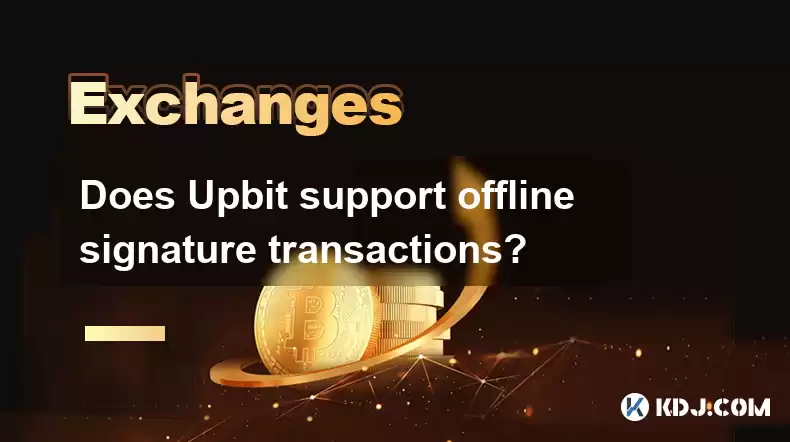-
 Bitcoin
Bitcoin $117500
2.15% -
 Ethereum
Ethereum $3911
6.19% -
 XRP
XRP $3.316
10.79% -
 Tether USDt
Tether USDt $1.000
0.01% -
 BNB
BNB $787.2
2.24% -
 Solana
Solana $175.2
4.15% -
 USDC
USDC $0.9999
0.00% -
 Dogecoin
Dogecoin $0.2225
8.40% -
 TRON
TRON $0.3383
0.28% -
 Cardano
Cardano $0.7868
6.02% -
 Stellar
Stellar $0.4382
9.34% -
 Hyperliquid
Hyperliquid $40.92
7.56% -
 Sui
Sui $3.764
7.63% -
 Chainlink
Chainlink $18.48
10.66% -
 Bitcoin Cash
Bitcoin Cash $582.1
1.88% -
 Hedera
Hedera $0.2601
6.30% -
 Avalanche
Avalanche $23.33
4.94% -
 Ethena USDe
Ethena USDe $1.001
0.02% -
 Litecoin
Litecoin $122.3
2.04% -
 UNUS SED LEO
UNUS SED LEO $8.969
-0.27% -
 Toncoin
Toncoin $3.339
0.86% -
 Shiba Inu
Shiba Inu $0.00001287
4.30% -
 Uniswap
Uniswap $10.43
7.38% -
 Polkadot
Polkadot $3.861
5.08% -
 Dai
Dai $1.000
0.02% -
 Bitget Token
Bitget Token $4.513
3.41% -
 Monero
Monero $267.7
-6.18% -
 Cronos
Cronos $0.1499
4.14% -
 Pepe
Pepe $0.00001110
5.15% -
 Aave
Aave $284.9
8.28%
Does Upbit support offline signature transactions?
Upbit does not support offline signature transactions, but offers 2FA and withdrawal address whitelisting for enhanced security.
Apr 19, 2025 at 12:28 pm

Introduction to Offline Signature Transactions
Offline signature transactions are a security feature that allows users to sign transactions offline, away from internet-connected devices, reducing the risk of theft or hacking. This method is particularly popular among cryptocurrency enthusiasts who prioritize security. One of the questions often asked is whether Upbit, a major South Korean cryptocurrency exchange, supports this feature.
Understanding Upbit's Security Measures
Upbit, one of the largest cryptocurrency exchanges in South Korea, places a strong emphasis on security. The platform employs a variety of security measures to protect users' assets, including two-factor authentication (2FA), cold storage for the majority of funds, and regular security audits. However, the specific support for offline signature transactions is a key point of interest for many users.
Upbit's Stance on Offline Signature Transactions
As of the latest information available, Upbit does not support offline signature transactions. This means that users cannot sign transactions offline and then submit them to the Upbit platform. Instead, all transactions must be initiated and signed through the Upbit interface, which is connected to the internet. This setup, while secure in its own right, does not provide the additional layer of security offered by offline signatures.
Alternatives to Offline Signatures on Upbit
While Upbit does not support offline signature transactions, there are other security measures users can take to protect their assets. For instance, users can enable two-factor authentication (2FA) to add an extra layer of security to their accounts. Additionally, Upbit provides options for withdrawal address whitelisting, which helps prevent unauthorized withdrawals by limiting transactions to pre-approved addresses.
How to Enhance Security on Upbit
To enhance security on Upbit without offline signature transactions, users can follow these steps:
Enable Two-Factor Authentication (2FA):
- Log into your Upbit account.
- Navigate to the security settings.
- Select the option to enable 2FA.
- Follow the prompts to link your 2FA app, such as Google Authenticator or Authy.
- Enter the verification code provided by your 2FA app to complete the setup.
Set Up Withdrawal Address Whitelisting:
- Access your Upbit account.
- Go to the withdrawal settings.
- Choose the option to add a new withdrawal address.
- Enter the cryptocurrency type and the address you wish to whitelist.
- Confirm the addition of the address to your whitelist.
Use Strong Passwords and Regularly Update Them:
- Ensure your Upbit password is strong and unique.
- Change your password regularly to minimize the risk of unauthorized access.
Comparing Upbit to Other Exchanges
When considering the support for offline signature transactions, it's useful to compare Upbit to other exchanges. Some platforms, such as Ledger Live and Trezor Suite, do support offline signatures, allowing users to sign transactions on their hardware wallets before broadcasting them to the blockchain. In contrast, Upbit's focus remains on other security measures, such as cold storage and 2FA, to protect user funds.
User Experiences and Feedback on Upbit's Security
User feedback on Upbit's security is generally positive, with many users appreciating the platform's robust security measures. However, some users who prioritize the highest level of security may find the lack of support for offline signature transactions a drawback. Online forums and social media platforms often feature discussions about Upbit's security, with users sharing their experiences and tips for maximizing security on the platform.
Frequently Asked Questions
Q: Can I use a hardware wallet with Upbit to enhance security?
A: While Upbit does not support offline signature transactions, you can use a hardware wallet to store your cryptocurrencies securely. However, you will need to transfer your assets to the hardware wallet and manage transactions through the hardware wallet's interface, not through Upbit.
Q: Does Upbit offer any insurance for user funds?
A: Upbit has a fund protection system in place, which includes a dedicated reserve of cryptocurrencies to cover potential losses. However, it is not traditional insurance but rather a self-insurance model designed to safeguard user assets.
Q: How can I report suspicious activity on my Upbit account?
A: If you notice any suspicious activity on your Upbit account, you should immediately contact Upbit's customer support. You can do this by logging into your account, navigating to the support section, and submitting a ticket detailing the issue. Upbit's team will then investigate and take appropriate action to secure your account.
Q: Are there any fees associated with enabling additional security features on Upbit?
A: Upbit does not charge any fees for enabling security features such as 2FA or withdrawal address whitelisting. These features are provided free of charge to enhance user security.
Disclaimer:info@kdj.com
The information provided is not trading advice. kdj.com does not assume any responsibility for any investments made based on the information provided in this article. Cryptocurrencies are highly volatile and it is highly recommended that you invest with caution after thorough research!
If you believe that the content used on this website infringes your copyright, please contact us immediately (info@kdj.com) and we will delete it promptly.
- XRP ETF, Bitcoin ETF, and Japan: A New Era for Crypto Investing?
- 2025-08-08 14:30:12
- Crypto, Congress, and Bills: Navigating the Regulatory Landscape in 2025
- 2025-08-08 14:30:12
- Union Jack Oil, Unused Gas, and Bitcoin: A New York Minute on UK's Crypto-Energy Play
- 2025-08-08 14:50:12
- Bitcoin Price: Bullish Flag Points to $123K Breakout?
- 2025-08-08 14:50:12
- Crypto Group's WNBA Dildo Toss: Meme Coin Mania or Just Plain Dumb?
- 2025-08-08 14:55:13
- Stablecoins, Hong Kong, and On-Chain Finance: Navigating the Regulatory Maze
- 2025-08-08 12:30:12
Related knowledge

How to use margin trading on Poloniex
Aug 08,2025 at 09:50am
Understanding Margin Trading on Poloniex

How to use advanced trading on Gemini
Aug 08,2025 at 04:07am
Understanding Advanced Trading on GeminiAdvanced trading on Gemini refers to a suite of tools and order types designed for experienced traders who wan...

How to deposit USD on Bitstamp
Aug 07,2025 at 05:18pm
Understanding Bitstamp and USD DepositsBitstamp is one of the longest-standing cryptocurrency exchanges in the industry, offering users the ability to...

How to use the Kraken Pro interface
Aug 08,2025 at 09:57am
Understanding the Kraken Pro Interface LayoutThe Kraken Pro interface is designed for both novice and experienced traders seeking a streamlined experi...

How to find my transaction ID on Gemini
Aug 08,2025 at 12:50am
Understanding the Transaction ID in Cryptocurrency ExchangesA transaction ID (TXID) is a unique alphanumeric string that identifies a specific transfe...

How to calculate crypto taxes from Binance
Aug 08,2025 at 07:56am
Understanding Cryptocurrency Taxation on BinanceCalculating crypto taxes from Binance requires a clear understanding of how tax authorities classify d...

How to use margin trading on Poloniex
Aug 08,2025 at 09:50am
Understanding Margin Trading on Poloniex

How to use advanced trading on Gemini
Aug 08,2025 at 04:07am
Understanding Advanced Trading on GeminiAdvanced trading on Gemini refers to a suite of tools and order types designed for experienced traders who wan...

How to deposit USD on Bitstamp
Aug 07,2025 at 05:18pm
Understanding Bitstamp and USD DepositsBitstamp is one of the longest-standing cryptocurrency exchanges in the industry, offering users the ability to...

How to use the Kraken Pro interface
Aug 08,2025 at 09:57am
Understanding the Kraken Pro Interface LayoutThe Kraken Pro interface is designed for both novice and experienced traders seeking a streamlined experi...

How to find my transaction ID on Gemini
Aug 08,2025 at 12:50am
Understanding the Transaction ID in Cryptocurrency ExchangesA transaction ID (TXID) is a unique alphanumeric string that identifies a specific transfe...

How to calculate crypto taxes from Binance
Aug 08,2025 at 07:56am
Understanding Cryptocurrency Taxation on BinanceCalculating crypto taxes from Binance requires a clear understanding of how tax authorities classify d...
See all articles

























































































